“Discover the unique ways people around the globe celebrate Christmas traditions! From dazzling lights and thoughtful gifts to delicious special food, explore the diverse customs that make this holiday so special.”
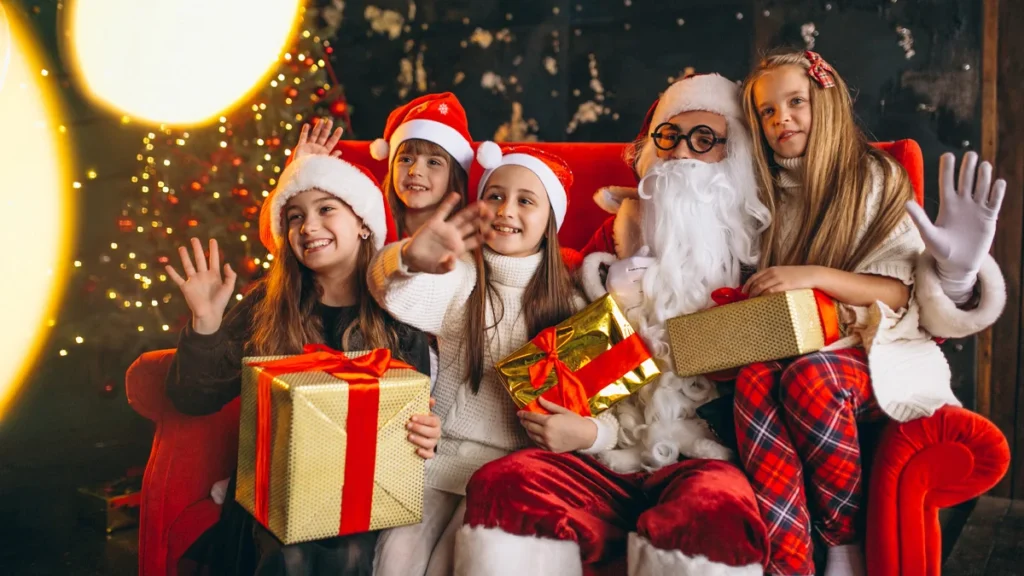
Hey there! Ever wondered how Christmas traditions are celebrated in different places? It’s pretty cool! We’re taking a trip around the world to see how folks celebrate this awesome holiday and their unique Christmas traditions. From beautiful decorations and yummy food to exchanging presents and fun activities, every place has its special way of making Christmas super fun. Join us as we uncover the colorful and exciting Christmas traditions that make this holiday a global celebration!
- 28 Unique Christmas Traditions Around the World
- 1. Christmas tradition in United States and Canada
- 2. Aussie (Australian) Christmas traditions
- 3. Mistletoe Christmas tradition
- 4. Italy Christmas Tradition
- 5. Swedish Christmas traditions
- 6. Krampus Christmas tradition
- 7. Victorian Christmas traditions
- 8. Catholic Christmas traditions
- 9. Armenian Christmas traditions
- 10. Black Christmas traditions
- 11. German Christmas Traditions
- 12. Spanish Christmas tradition
- 13. Basque Christmas traditions
- 14. Norwegian Christmas traditions
- 15. Brazilian Christmas traditions
- 16. Cajun Christmas traditions
- 17. Celtic Christmas traditions
- 18. Mexican Christmas traditions
- 19. Mormon Christmas traditions
- 20. Jewish Christmas traditions
- Our Other Latest Articles
28 Unique Christmas Traditions Around the World
1. Christmas tradition in United States and Canada
In the United States and Canada, Christmas traditions combine various customs from different cultures, creating a diverse tapestry of celebrations.
Decorations like Christmas trees, lights, wreaths, and Nativity scenes adorn homes and public spaces. Families often exchange gifts, attend church services, and enjoy festive meals together, with traditional dishes varying across regions.
Santa Claus, a beloved figure, plays a significant role, and children eagerly await his visit to deliver gifts. Caroling, where groups sing Christmas songs door-to-door, adds to the festive spirit.
2. Aussie (Australian) Christmas traditions
Australian Christmas traditions are influenced by the country’s warm climate and unique culture. Celebrated in the midst of summer, many Aussies embrace outdoor activities like barbecues and beach visits. Families often gather for a Christmas meal featuring traditional roast meats alongside seafood like prawns or lobster. Decorations often include native flora like eucalyptus leaves or blossoms, and some households decorate with “Christmas bush,” a native plant with red flowers.
Carols by Candlelight events are popular, where communities come together to sing Christmas songs in parks or public spaces, often holding candles or glow sticks.
Santa Claus, though dressed in his traditional attire, is sometimes depicted wearing shorts and sunglasses due to the warm weather. Children leave out treats for Santa on Christmas Eve, like beer or cookies, acknowledging the change in climate.
3. Mistletoe Christmas tradition

Mistletoe has been part of Christmas traditions for centuries. Hanging mistletoe is believed to bring good luck and fertility while warding off evil spirits. A prevalent tradition involves kissing under the mistletoe; it’s said that if two people find themselves under it, they should share a kiss. Once a kiss is exchanged, a berry is removed until none remain, signaling the end of the kissing tradition. This custom symbolizes goodwill, love, and friendship during the holiday season. The use of mistletoe in decorations, especially in doorways or ceilings, remains a playful and romantic aspect of Christmas celebrations in many cultures.
4. Italy Christmas Tradition
In Italy, Christmas traditions are rich in religious significance and festive customs. “Presepe,” the Nativity scene, is a prominent feature in homes, churches, and public areas, symbolizing the birth of Jesus. Italians start their celebrations with Advent, a period of preparation for Christmas, often marked by Nativity displays and lighting of candles.
On Christmas Eve, families gather for a feast called “La Vigilia,” featuring a variety of seafood dishes like eel, shrimp, and baccalà (salted cod). Midnight Mass, or “La Messa di Mezzanotte,” is attended to celebrate Jesus’ birth.
Christmas Day brings another elaborate meal with regional specialties like panettone (sweet bread) and pandoro (golden cake). Families exchange gifts and enjoy the festive atmosphere. The holiday season extends to Epiphany on January 6th, celebrated as “La Befana,” when children receive gifts from the kind witch La Befana.
5. Swedish Christmas traditions
Swedish Christmas traditions are beautiful and cozy, filled with warmth and cheer. One of the key traditions is Saint Lucia’s Day on December 13th, celebrating light during the darkest time of the year. A young girl is chosen to portray Saint Lucia, wearing a crown of candles and leading a procession while singing traditional songs.
Advent is also significant, marked by Advent candles and calendars. Families gather to light candles and enjoy special treats each Sunday leading up to Christmas. Swedes decorate their homes with traditional ornaments like straw goats and hearts, alongside the iconic Swedish Yule goat, a symbol of Christmas.
Christmas Eve, called “Julafton,” is the main celebration. Families exchange gifts, enjoy a feast featuring dishes like meatballs, herring, and a Christmas ham, and dance around the Christmas tree singing carols.
6. Krampus Christmas tradition
Krampus is a part of Central European folklore linked to Christmas traditions. Unlike the benevolent figure of Santa Claus, Krampus is a horned, demonic creature, often depicted with chains and bells. In some traditions, he accompanies St. Nicholas during the holiday season.
On Krampusnacht (Krampus Night), usually observed on December 5th, people in some European regions dress as Krampus and roam the streets, frightening children who have misbehaved. It’s believed that Krampus punishes naughty children while St. Nicholas rewards the well-behaved ones.
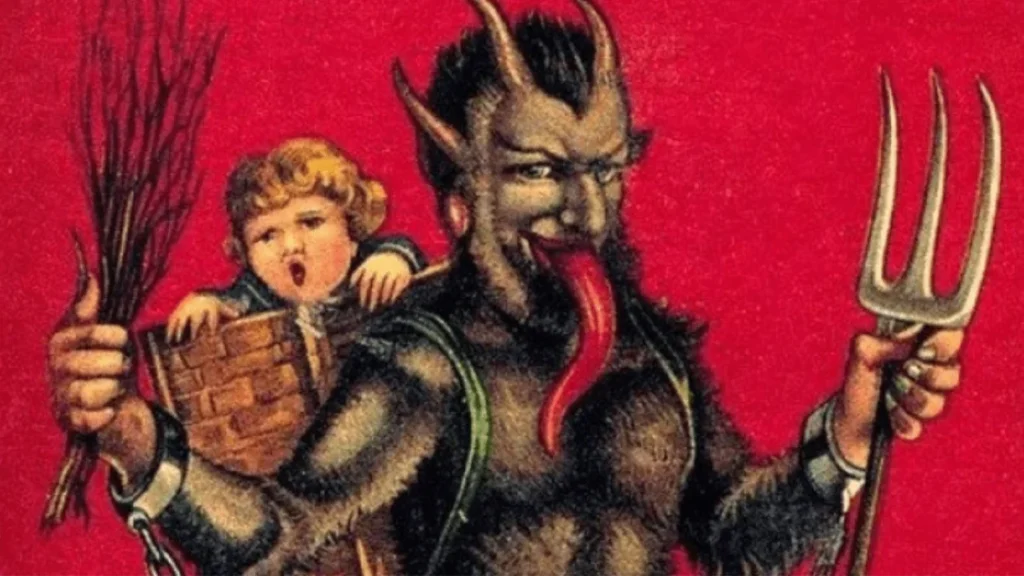
Krampus traditions include parades where people in elaborate Krampus costumes march through towns, creating a lively and sometimes intimidating atmosphere. The aim is to instill a sense of fear in children to encourage good behavior.
7. Victorian Christmas traditions
During Queen Victoria’s time, Christmas was all about family, fancy decorations, and being kind. They started the tradition of the Christmas tree with pretty candles and homemade ornaments. People sent cards with nice pictures and kind messages. Gifts were often handmade, and everyone sang songs together. They ate big meals with turkey and yummy desserts like pudding. Helping others who didn’t have much was also a big deal. The Victorians liked being together, making things look pretty, and being generous, and their traditions shaped how we celebrate Christmas today.
8. Catholic Christmas traditions
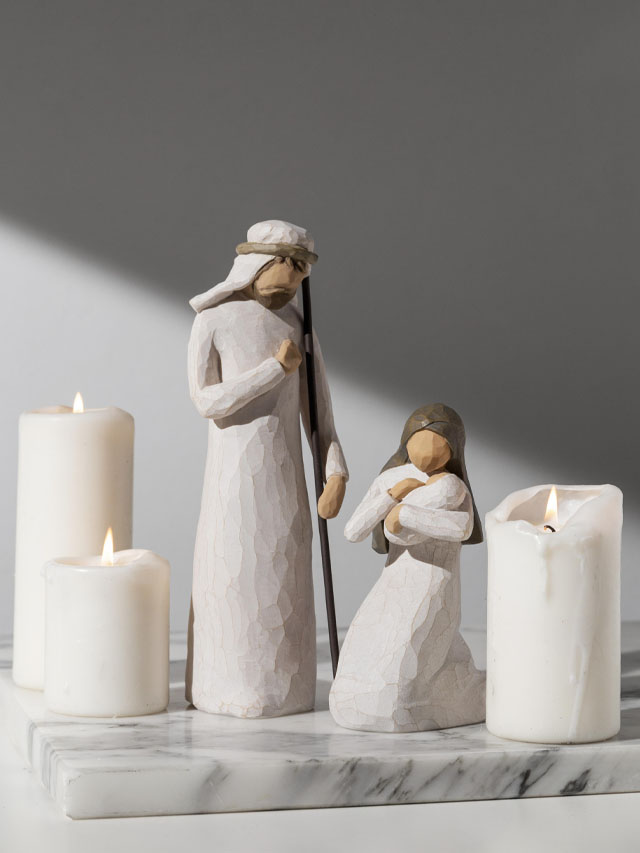
Catholic Christmas traditions are deeply rooted in religious customs and celebrations commemorating the birth of Jesus Christ. The Advent season, starting four Sundays before Christmas, involves preparing spiritually for Christ’s coming through prayers, reflections, and lighting Advent candles on an Advent wreath. Nativity scenes, depicting the birth of Jesus, are prominently displayed in churches and homes.
Christmas Eve, known as Vigil Mass, holds special significance in Catholicism. It often includes midnight Mass or evening services, where the birth of Christ is commemorated through hymns, readings, and prayers. The “Gloria” is sung or recited after being omitted during Advent. The Eucharist, or Holy Communion, is also central to the Mass.
Many Catholic households exchange gifts on Christmas Day, symbolizing the gifts given to Jesus by the Wise Men. Families gather for festive meals, often featuring traditional foods like roast meats, special desserts, and treats.
9. Armenian Christmas traditions
Armenian Christmas, celebrated on January 6th, is known as “Theophany” or “Armenian Christmas” and is a significant religious and cultural event. It commemorates the birth and baptism of Jesus Christ.
The main tradition is the liturgical celebration called the “Divine Liturgy,” held in Armenian Apostolic churches. This service involves prayers, hymns, and the blessing of water, symbolizing the baptism of Jesus in the River Jordan.
Preceding Christmas, there’s a period of fasting called “Fast of the Nativity” or “Advent,” lasting 40 days. The fast is broken after the Christmas Eve service with a special meal called “khetum,” featuring dishes like rice pilaf, fish, and dried fruits.
On Christmas Day itself, families gather for festive meals that often include dishes like “khorovats” (barbecue), “dolma” (stuffed vegetables), and pastries. Another unique tradition is the blessing of homes by priests who sprinkle holy water to bring blessings and protection for the coming year.
10. Black Christmas traditions
“Black Christmas” can refer to a variety of contexts, including celebrations in the African American community. The holiday season brings forth cultural celebrations and traditions. Kwanzaa, observed from December 26th to January 1st, celebrates African heritage and unity through daily principles and communal gatherings. Families participate in feasts, light candles on a kinara, exchange gifts, and take part in cultural activities.
Christmas often includes soul food feasts, featuring dishes such as collard greens, fried chicken, and sweet potatoes. Gospel music holds great significance, as churches often host special services featuring soulful hymns sung by gospel choirs.
11. German Christmas Traditions
German Christmas traditions are deeply rooted in the festive season. The Advent season kicks off the celebrations, marked by the lighting of an Advent wreath with four candles, one for each Sunday leading up to Christmas. The renowned Christmas markets, or Weihnachtsmarkt, open in late November, offering handmade crafts, savory treats like bratwurst, and delightful sweets such as gingerbread cookies (Lebkuchen) and mulled wine (Glühwein).
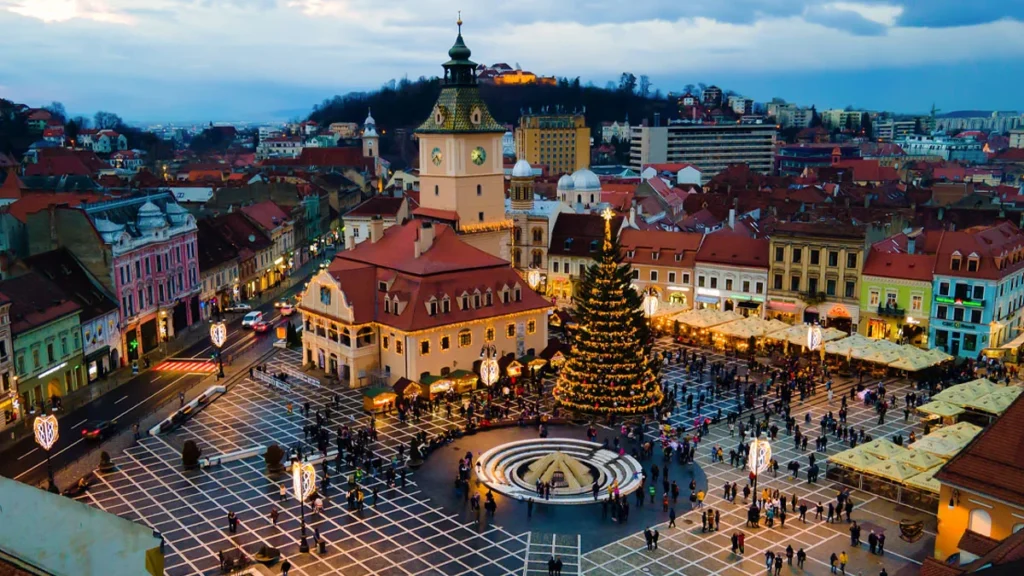
St. Nicholas Day on December 6th sees St. Nicholas (der Nikolaus) visiting homes to bring small gifts and treats for children who’ve left polished boots outside their doors. Advent calendars, filled with chocolates or small surprises, count down the days until Christmas Eve.
Heiligabend, or Christmas Eve on December 24th, takes center stage with gift exchanges and family gatherings. Many attend church services before indulging in a festive dinner. The iconic Christmas tree, or Tannenbaum, is traditionally decorated on this evening, symbolizing the heart of the season’s festivities.
12. Spanish Christmas tradition
Spanish Christmas traditions blend religious customs with lively celebrations. “Navidad” starts with “Nochebuena” (Christmas Eve), marked by families coming together for a festive dinner featuring specialties like “turron” (nougat) and “cava” (sparkling wine). The “lotería de Navidad,” a famous Christmas lottery, creates excitement nationwide.
“La Misa del Gallo” (Midnight Mass) is attended to honor the birth of Jesus. Following this, families exchange gifts on “El Día de Navidad” (Christmas Day), often accompanied by another feast.
The holiday season extends to “Los Reyes Magos” (Three Kings’ Day) on January 6th, with parades and children receiving gifts. Nativity scenes (Belenes) are widespread, displayed in homes and public places.
13. Basque Christmas traditions
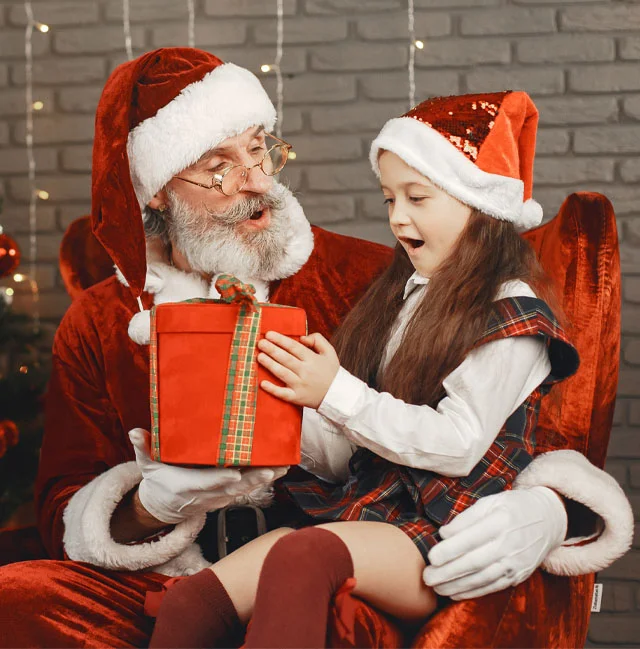
Basque Christmas traditions are rich and diverse, reflecting the region’s unique cultural heritage. One significant tradition is “Olentzero,” a mythical figure who brings gifts to children on Christmas Eve. Olentzero is portrayed as a Basque charcoal burner, often depicted in parades and celebrations.
On Christmas Eve, families gather for a special meal featuring traditional Basque dishes like “bacalao al pil-pil” (codfish), “txistorra” (sausage), and “marmitako” (fish stew). After dinner, some communities participate in torch-lit processions to welcome Olentzero or attend Midnight Mass. A noteworthy Basque tradition is the celebration of “Gabon Kanta” or “Basque carols,” where locals sing traditional Basque Christmas songs called “bertsolaris” in town squares or churches.
14. Norwegian Christmas traditions
Norwegian Christmas traditions are rich in warmth and coziness. The festive season starts with Advent, marked by lighting candles and enjoying treats.
“Julebord,” a Christmas feast, includes dishes like ribbe (roast pork belly), lutefisk (dried cod), and riskrem (rice pudding).
Decorations feature hearts, candles, and traditional “Julenisse” figures. Families gather on Christmas Eve for a special meal, exchanging gifts, and dancing around the tree singing carols.
Norwegians extend the celebrations to “Romjul,” the period between Christmas and New Year’s, often spent with family and friends.
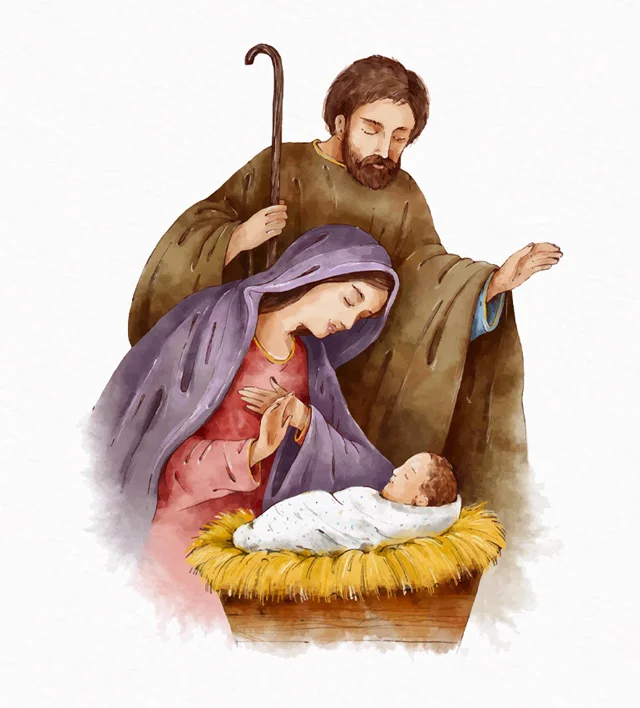
15. Brazilian Christmas traditions
Brazilian Christmas celebrations blend diverse traditions. Nativity scenes, called Presepio, are prevalent in homes and public spaces, showcasing the birth of Jesus with cultural touches. Christmas trees decked with lights and ornaments adorn urban areas, while Papai Noel (Father Christmas) brings gifts to children on Christmas Eve.
Midnight Mass, known as “Missa do Galo,” draws many to churches for a special service commemorating Jesus’ birth. Families gather late into the night for a Christmas feast featuring roasted turkey, ham, rice, and traditional desserts like panettone or rabanada.
16. Cajun Christmas traditions
Cajun Christmas traditions in Louisiana embody a vibrant blend of cultures. Families come together for Réveillon, a post-Midnight Mass feast featuring hearty Cajun dishes like gumbo and jambalaya. Bonfires line the Mississippi River levees on Christmas Eve, guiding Papa Noël, the Cajun Santa Claus. Cajun music and lively dances fill the air during special Christmas concerts. Homes and towns are adorned with colorful decorations, reflecting Cajun charm with lights, wreaths, and Nativity scenes. These traditions reflect a rich mix of French, Spanish, and Creole influences, emphasizing community, food, music, and a warm festive spirit.
17. Celtic Christmas traditions
Celtic Christmas traditions are rooted in ancient customs honoring the winter solstice and nature’s cycles. Yule, originating from Celtic practices, celebrates the solstice with candle lighting, bonfires, and bringing evergreen plants like holly and mistletoe indoors. The Feast of Alban Arthuan, marking the Sun King’s rebirth, involves feasting and storytelling to welcome the returning light. Celtic music, featuring fiddles and lively dances, adds to the festive spirit. Wassailing, toasting and blessing orchards for a good harvest, is sometimes part of the celebrations. Homes are adorned with evergreen boughs and wreaths, symbolizing life and protection during winter. These traditions reflect reverence for nature’s rhythms and the cyclical nature of life during the holiday season.
18. Mexican Christmas traditions
Mexican Christmas traditions blend religious customs with vibrant cultural celebrations. Posadas, reenacting Mary and Joseph’s search for shelter, occur from December 16th to 24th, featuring processions, songs, and reenactments. On Nochebuena (Christmas Eve), families gather for a festive meal, often featuring dishes like tamales, bacalao (dried salted cod), and ponche, a warm fruit punch. Midnight Mass, called Misa de Gallo, marks the birth of Jesus, followed by fireworks and celebrations. The Nativity scene, or Nacimiento, is a focal point in homes and churches. The holiday season extends to Epiphany (Día de Reyes) on January 6th, when children receive gifts commemorating the Wise Men’s visit. Piñatas and traditional music like villancicos add joy to the festivities, uniting religious reverence with cultural richness during Mexican Christmas celebrations.
19. Mormon Christmas traditions
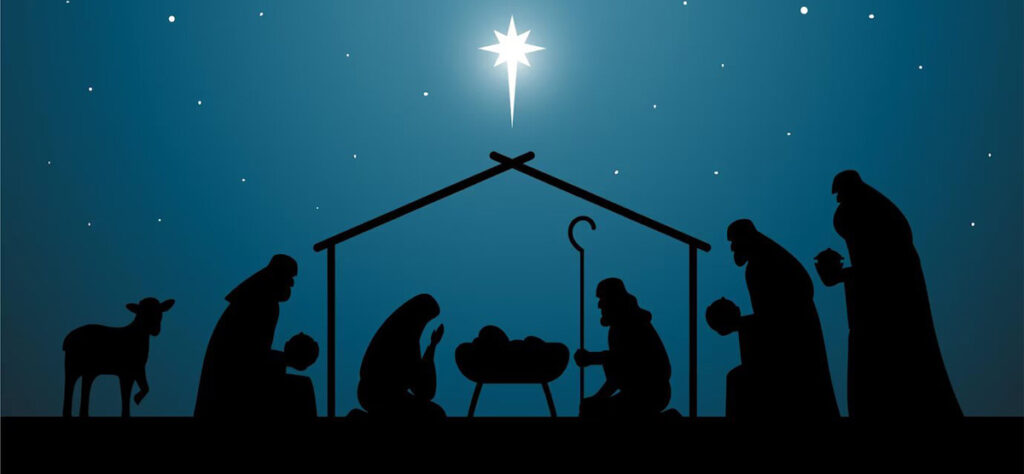
Mormon Christmas traditions center on family, faith, and service. Special services and nativity displays honor the birth of Jesus Christ. Actively engaging in charitable acts, Mormons donate and volunteer in their communities. Family gatherings are marked by meals, hymns, and thoughtful gift exchanges, underscoring the spiritual importance of the holiday. These traditions echo values of love, kindness, and the religious significance of Christ’s birth, emphasizing togetherness and the spirit of giving.
20. Jewish Christmas traditions
In Jewish tradition, while Hanukkah aligns with the Christmas season, it isn’t considered a Jewish counterpart to Christmas. Nevertheless, some Jewish families have developed their own customs to coincide with the festive atmosphere. Hanukkah, celebrated for eight days and nights, involves lighting the menorah and exchanging gifts, playing games like dreidel, and relishing fried foods such as latkes and sufganiyot.
On Christmas Day, it’s common for some Jewish families to enjoy Chinese food and movies, as these establishments are often open when other businesses are closed. Additionally, many use the day for volunteering or engaging in charitable activities, embracing the opportunity to contribute to their communities. These traditions have emerged as ways for Jewish individuals and families to partake in the holiday season in their unique manner.
21. Christian Christmas traditions
Christian Christmas traditions vary across cultures but commonly involve religious customs and festivities commemorating the birth of Jesus Christ. Christmas Eve services are integral, often featuring carol singing, scripture readings, and candlelight ceremonies in churches worldwide. The nativity scene, representing the birth of Jesus, is a central decoration in many Christian households and churches. Exchanging gifts on Christmas morning symbolizes the gift of Jesus to the world.
Advent calendars, wreaths, and the lighting of candles each Sunday leading up to Christmas emphasize anticipation and preparation. Traditional foods like roast turkey, ham, puddings, and special treats like Christmas cookies or fruitcakes are enjoyed. For many Christians, Christmas is a time of spiritual reflection, expressing gratitude, and sharing love and kindness with others, echoing the message of peace and goodwill associated with the birth of Christ.
22. Latino Christmas traditions
Latino Christmas traditions are a vibrant fusion of religious customs and cultural celebrations. “Las Posadas” reenacts Mary and Joseph’s search for shelter and takes place from December 16th to 24th, involving processions, songs, and symbolic representations. Nochebuena (Christmas Eve) is a cherished family gathering with feasts featuring dishes like tamales, lechón (roast pig), and arroz con gandules (rice with pigeon peas). Midnight Mass, known as Misa de Gallo, is an essential part of the celebration. The Nativity scene (Nacimiento) holds significance, displayed in homes and churches. The holiday season extends to Día de Reyes (Three Kings’ Day) on January 6th, commemorating the Wise Men’s visit, when children receive gifts. Piñatas, traditional music like villancicos, and vibrant cultural expressions weave together religious reverence and lively festivities during Latino Christmas celebrations.
23. Norse Christmas traditions
Norse Christmas traditions draw from ancient pagan customs intertwined with modern-day practices. The Norse celebrated “Yule” during the winter solstice, around December, marking the rebirth of the sun. The Yule log, a large log burned in the hearth, symbolized warmth and light during the darkest days. The celebration lasted for several days, involving feasts, drinking, and honoring Odin, the god of wisdom, among other deities.
Evergreen plants like holly and ivy were used for decoration, representing eternal life amidst winter’s dormancy. The tradition of the Yule goat, representing the spirit of the harvest, still endures in some Nordic cultures. In modern times, Norse customs blend with Christian traditions during the holiday season.
24. Serbian Christmas traditions
Serbian Christmas, celebrated on January 7th following the Julian calendar, holds rich Orthodox Christian traditions. Christmas Eve, known as Badnji Dan, involves burning the Badnjak, a symbolic tree branch, accompanied by prayers and songs. On Christmas Day, families attend church services and share a festive meal featuring roasted pig, special bread (česnica) with hidden coins, and assorted pastries.
The celebration extends for three days, emphasizing family gatherings, gift exchanges, and visiting loved ones. Across different regions, traditional folk music, dances, and customs add vibrant diversity. Caroling groups known as “kolyadki” visit homes, singing songs and receiving treats. Folk beliefs in protective spirits, such as the “koledari,” contribute to the festive folklore.
25. Southern Christmas traditions
Southern Christmas traditions in the United States embrace warm hospitality, festive decorations, and cherished culinary delights. Homes dazzle with twinkling lights, wreaths, and ornate displays featuring regional touches like magnolia leaves. Traditional meals showcase glazed ham, turkey, cornbread dressing, collard greens, and sweet potato casserole, accompanied by indulgent treats like fruitcakes and eggnog. Southern hospitality shines as families warmly welcome guests, inviting them to share in the holiday spirit, meals, and often extending invitations for overnight stays. These traditions reflect a blend of cultural heritage and a spirit of generosity and warmth during the festive season in the South.
26. Polish Christmas tradition
Polish Christmas traditions, known as “Wigilia,” are deeply rooted in customs and rituals. Celebrated on Christmas Eve, families gather for a solemn and symbolic dinner. Before the meal, a hay-covered table is set with an empty seat, symbolizing a place for an unexpected guest or representing departed loved ones.
The dinner begins after the appearance of the first star in the sky. A key element is the breaking of the Christmas wafer (opłatek), where family members share good wishes and forgiveness. The meal typically consists of twelve meatless dishes, representing the twelve apostles, including fish, pierogi (filled dumplings), and various traditional sweets.
The traditions involve the singing of carols, including the beautiful “Kolędy,” and exchanging gifts after dinner. The festive atmosphere continues with attending Midnight Mass (Pasterka) to celebrate the birth of Jesus. These traditions emphasize family togetherness, spiritual reflection, and sharing goodwill during the Christmas season in Poland.
27. Ethiopia Christmas tradition
In Ethiopia, Christmas, known as “Ganna” or “Lidet,” is celebrated on January 7th, following the Julian calendar. It’s a significant religious observance for Ethiopian Orthodox Christians.
The celebration starts with fasting, known as “Tsome Gahad” or the Advent fast, which lasts for 43 days. On Christmas Eve, people attend church services, often lasting through the night, featuring prayers, hymns, and spiritual rituals.
The traditional Ethiopian dish “Doro Wat,” a spicy chicken stew, is a staple during the festive meal on Christmas Day. Families come together to share this special meal, often accompanied by injera, a sourdough flatbread.
In some regions, there are colorful processions and traditional dances, adding to the joyful ambiance of the celebrations. Gifts are not a central part of the Ethiopian Christmas but rather a time for communal gatherings, religious observations, and sharing meals with loved ones.
28. Japan Christmas Tradition
In Japan, Christmas isn’t a religious holiday but is celebrated uniquely. It’s more of a commercial and cultural event. Decorations adorn cities, especially in urban areas like Tokyo, creating a festive atmosphere with lights, decorations, and Christmas trees.
While it’s not a day off, people exchange gifts, often chocolates, and enjoy festive illuminations. KFC’s fried chicken is popular as a Christmas meal due to a successful marketing campaign in the past, making it a tradition for some families.
Couples might go on romantic dates, and Christmas Eve is considered a romantic night for many. Christmas cakes, beautifully decorated and often featuring strawberries and cream, are also a part of the celebrations.
“Good news! Te Mend is now available on WhatsApp & Telegram Channels. Subscribe today through the link and stay updated with the latest news!” Whatsapp & Telegram
